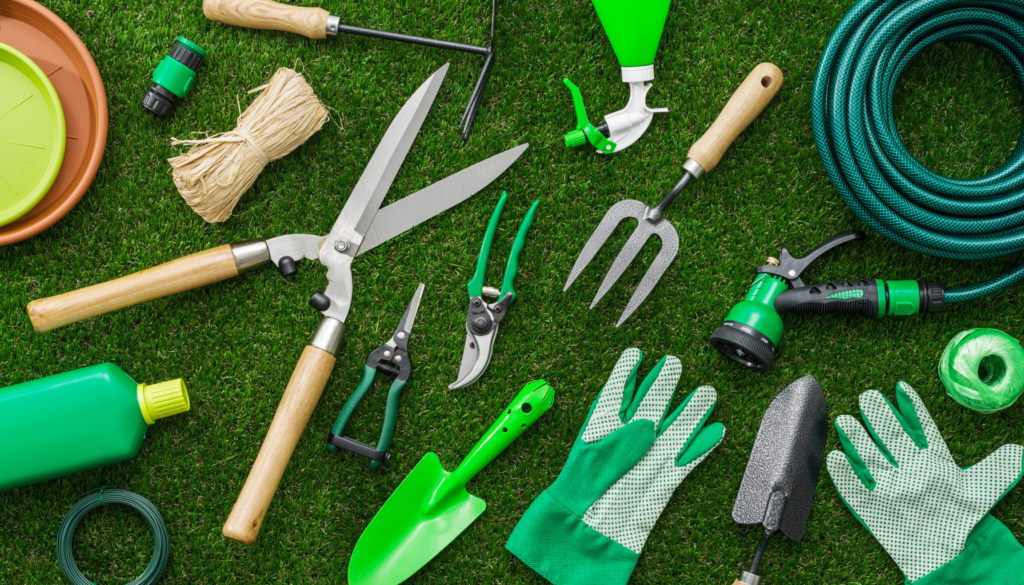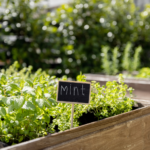Starting a garden is exciting, therapeutic, and rewarding—but it can also feel overwhelming when you’re not sure where to begin. One of the best ways to set yourself up for success is by having the right tools.
You don’t need a shed full of gadgets or an expensive setup. Just a few essential gardening tools can help you plant, prune, and grow with confidence—even if you’re brand new to gardening.
This guide covers the best tools for beginner gardeners, why each one matters, and how to choose quality without breaking the bank.
1. Gardening Gloves
A good pair of gloves is your first line of defense. Gardening can be rough on your hands—dirt, thorns, splinters, and insect bites are all part of the job.
Look for:
- Durable material (like leather or synthetic rubber)
- A snug but comfortable fit
- Breathable fabric to avoid sweaty hands
Gloves also help you work longer without discomfort and keep your hands clean—win-win.
2. Hand Trowel
This is the most versatile tool in your garden kit. You’ll use it for digging, planting, transferring soil, and even weeding.
Choose a trowel with:
- A comfortable, ergonomic handle
- A sturdy, rust-resistant blade (look for stainless steel or carbon steel)
- Measurement marks for accurate planting depth (optional, but helpful)
This one small tool does big work.
3. Pruning Shears (Hand Pruners)
Also known as secateurs, pruning shears are perfect for trimming plants, cutting dead stems, and harvesting herbs or flowers.
Key features to look for:
- Sharp blades that make clean cuts
- A safety lock for storage
- Comfortable grip, especially if you’ll be using them often
Pruning encourages healthy growth, and this tool makes it easy to do it right.
4. Watering Can or Hose with a Spray Nozzle
Watering seems simple—but doing it well requires the right tool. A watering can is ideal for small gardens or indoor plants, while a hose with a spray nozzle works better for larger outdoor spaces.
Tip:
- Choose a watering can with a long, narrow spout for control
- For hoses, get a multi-setting nozzle so you can adjust water pressure based on plant needs
Proper watering is the difference between thriving and struggling plants.
5. Garden Fork
If your soil is hard or compacted, a garden fork helps loosen it up, aerate it, and mix in compost.
When choosing a fork:
- Go for strong, sturdy tines that won’t bend easily
- Wooden or ergonomic handles make long use easier
- Stainless steel resists rust and lasts longer
This tool is essential for preparing planting beds.
6. Garden Hoe
This classic tool is great for:
- Breaking up tough soil
- Removing weeds quickly
- Shaping planting rows
Pro tip: For beginners, a lightweight hoe with a sharp blade is easier to handle and reduces fatigue.
7. Soil Scoop
Think of this as your gardening scoop. It’s wider and deeper than a trowel, making it perfect for:
- Transferring potting soil
- Filling containers
- Digging small holes
If you’re doing a lot of container gardening, this tool saves time and mess.
8. Garden Kneeler or Pad
Comfort matters! Gardening often means kneeling or sitting on hard surfaces, which can strain your knees and back over time.
A garden kneeling pad or foldable kneeler:
- Provides cushioning and support
- Keeps clothes clean
- Makes longer sessions more enjoyable
Many kneelers also come with handles to help you stand back up with ease.
9. Garden Tote or Tool Organizer
Keeping your tools organized is key—especially when you’re just starting out and still learning what you use most.
Look for:
- A durable tote with multiple pockets
- Waterproof or water-resistant material
- A central section for larger tools like a trowel or fork
This keeps everything in one place and saves you time every time you head out to the garden.
10. A Notebook or Gardening Journal
While not a “tool” in the traditional sense, a gardening journal is a powerful resource.
Use it to track:
- What you planted and when
- How often you watered or fertilized
- What worked (and what didn’t)
- Seasonal notes and weather patterns
Over time, it becomes your personalized gardening guide—and a great way to learn faster.
Bonus Tip: Start With Quality Over Quantity
As a beginner, you might feel tempted to buy every gardening gadget you see. Don’t! Start with these 8–10 essential tools, and invest in quality. A well-made tool will last you for years and make gardening a lot more enjoyable.
Look for:
- Rust-resistant metals
- Sturdy handles
- Comfortable grips
- Tools that feel right in your hands
You’ll grow into your gardening style—and your tool collection—over time.
Final Thoughts: Grow With Confidence
With just a few basic tools, you’ll be ready to dig, plant, water, and care for your garden like a pro. Gardening is about progress, not perfection—and these tools will support your journey from beginner to confident grower.
Every garden starts with a seed—and the right tools make it bloom



